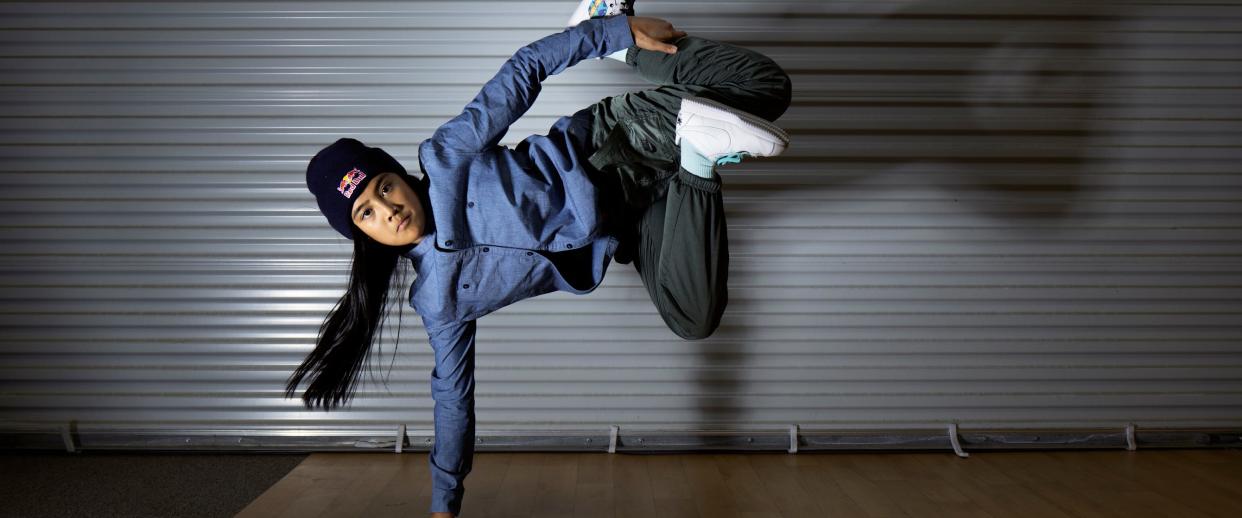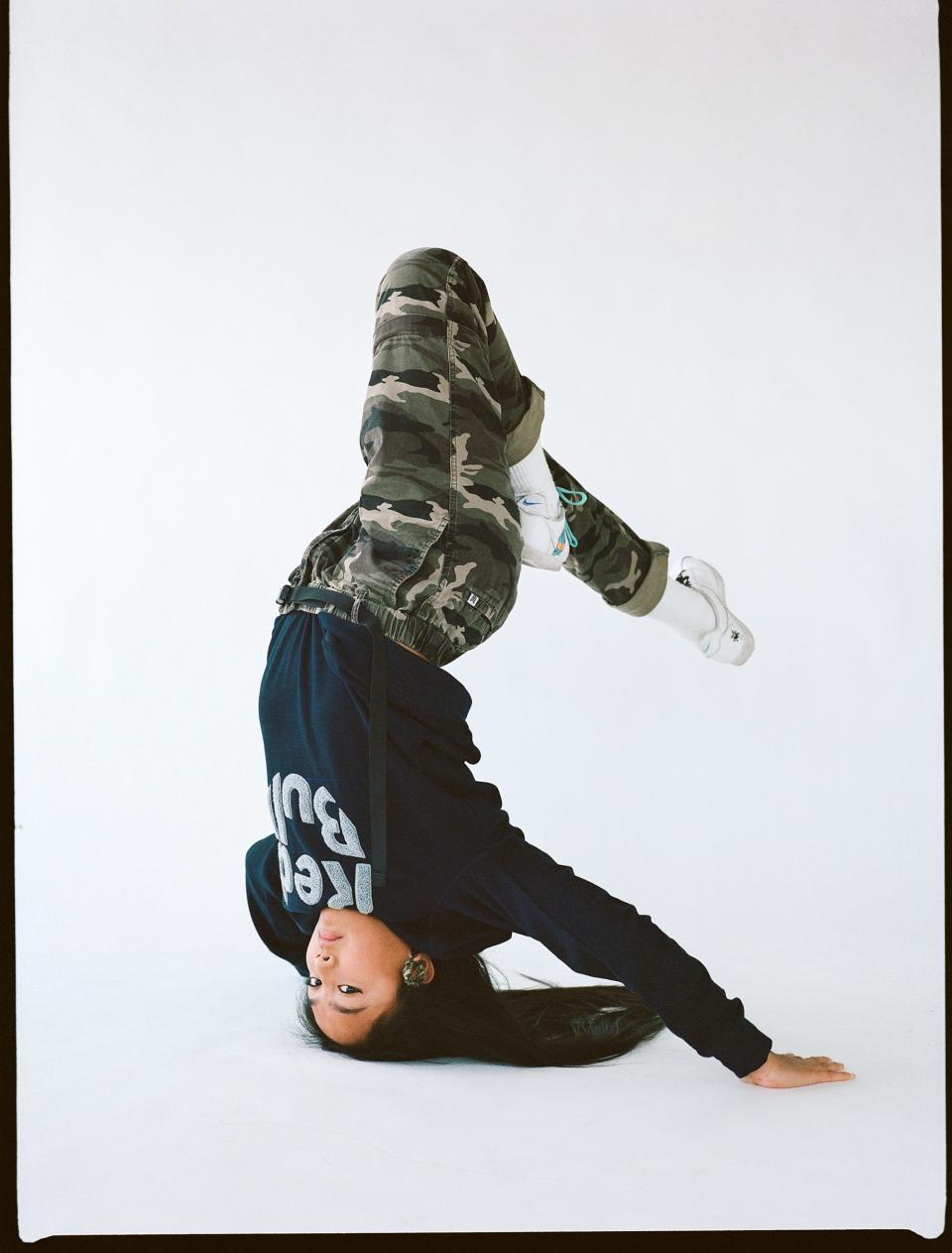As I train for Olympic breakdancing, I thank Simone Biles for her mental health choices

I’m 18 years old, a full-time professional breakdancer and a member of the Red Bull BC One All Stars and Underground Flow crew. Once breakin' was added to the Paris 2024 Olympics, it seemed as if the stars had aligned for the top-tier breakers in my generation (or any that will be in their prime that year).
I have found new levels of hope and inspiration for my success in 2024 watching this year's Olympic games – from the opening ceremony to the focus on mental health over competition.
All athletes train with intensity. And dancers, who are often overlooked in the sports world, are no different. When I saw respected gymnast Simone Biles step down from competition to focus on her mental health and support her team toward Olympic silver, I was initially shocked. But it reminded me of a time, as a dancer, when I struggled with the same.
In 2018, during a Silverback Open competition that gave me a name in breakin', I took the win, but almost didn't make it to the battle.

I had been away from breakin' for almost two years, and had been training hard to make a comeback. I put a lot of pressure on myself, and felt like expectations were burdening me. I even went through anxiety and feelings of depression. A week before the competition, I had a breakdown. I pulled away from the intensity of my training and changed my intention from having to win to experiencing the joy that brought me to the sport. If it wasn't for this shift in intention, I wouldn't have won.
I thank Biles for validating my decision. As I train for a spot in 2024, it was empowering for me to see an athlete acknowledge when the pressure becomes too great – it reminded me that I can do the same. If we all looked after our wellbeing more, there would be a lot less stress for everyone in the intense moments.
Demand on our bodies is tremendous
Most people don't even think of dancing as a sport, let alone an Olympic caliber competition.
But just like runners, gymnasts and surfers, we train for hours daily. The top B-boys and B-girls get sponsored by major brands like Red Bull (my sponsor) and Monster Energy to travel all over the world and battle. The demand on our bodies is tremendous.
But breakin' is more than a sport.
It requires not only athleticism, but creativity, uniqueness and musical connection. We do our thing on the floor with moves like airflares, windmills and backspins. But we can’t forget the other essential aspects of the dance like toprock, footwork, transitions and freezes. They all complete one another and cannot be represented in a round of competition individually without the other.
Every breaker is judged on the inclusion of these moves and how well the moves are executed. That's the technicality of it. But each dancer must also look different, more skilled and savvier than the next – that's part of the culture and artistry. We build from a solid foundation of moves and fundamentals.
Breakin' was created on the streets of the Bronx in New York. It holds a value and a cultural aesthetic that makes it a great fit for the Olympics – at its core the event is as much about diplomacy and cultural exchange as it is athletics. Breakin' originated among marginalized communities, and its inclusion in the 2024 games pays tribute to a side of American culture that has yet to be elevated to this stature.
There are so many parts of this dance that require energy. I have to make sure I’m training my groove and freestyle, which also helps my musicality, creativity and performance. For warm-up or drills, I like to freestyle to see what movement my body creates. This is how many dancers train for the spontaneous part of the sport (which goes back to the origins of breakin').
Drilling new and old moves, footwork, patterns and new combos are a huge part of breakdancing. In addition, I do a lot of different kinds of workouts like calisthenics, high-intensity interval training, mobility work, classic muscle building workouts and stamina drills.

We need to build our bodies for long days of battles that require up to 10 rounds per battle. Last but not least, I train my mind for the intense situations that I’m put in as an athlete. I am talking to a therapist that has competed in high-level sports. I study other dancers, read and repeat healthy affirmations.
Inclusion in 2024
The breakin' community’s reaction to 2024 inclusion has been a mix of excitement, apprehension and unsureness. It's a raw art form and the last thing we want to do is sacrifice its authenticity for commercialization.
But I truly believe that collaborative efforts between the Olympics and the breakin' community will allow us to represent the dance form's culture and athleticism without compromise.
Watching this year's opening ceremony showed me that we are moving in the right direction. It included cleanly executed tap dancing and intricate choreography. It showed me that there's a growing appreciation for dance and awareness of its athleticism.
In 2024, I hope that we – B-girls, B-boys and the hip-hop community – earn even more recognition and respect. I also hope that people continue to nurture the mental health needed for success in all sports.
Logan "Logistx" Edra is a Florida-based B-girl who is hoping for a spot on the 2024 Olympic breakin' team.
This article originally appeared on USA TODAY: Simone Biles choices on mental health empowered my Olympic dreams

 Yahoo Movies
Yahoo Movies 
